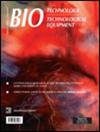Bigel formulations of St. John’s wort extract in wound healing: toxicological aspects
IF 1.4
4区 生物学
Q4 BIOTECHNOLOGY & APPLIED MICROBIOLOGY
引用次数: 0
Abstract
This study aimed to investigate the toxicological profile of hyperforin (HP) in silico and to assess it in vivo after topical application of an HP-rich St. John’s wort (SJW) extract. The former analysis predicted low toxicity because of HP’s inability to bind DNA or proteins, but structural alerts for skin irritation/corrosion, carcinogenicity, and mutagenicity were found. Animal studies involved the treatment of excision wounds in Wistar rats with poloxamer 407/borage oil formulations (bigels; Bs) containing HP-rich SJW extract previously developed by us. The effects of semisolids comprising ‘free’ extract (B/SJW) or extract loaded in nanostructured lipid carriers (B/NLC-SJW) were compared to positive (commercial herbal product) and negative (untreated) controls after 2-, 7-, 14-, and 21-day applications. Malondialdehyde (MDA) and ABTS assays evaluated the degree of oxidative stress—treatment with bigels did not affect MDA favorably but led to an increased radical-cation scavenging capacity (compared to controls). Gamma-glutamyl transferase (GGT), aspartate aminotransferase (ASAT), alanine aminotransferase (ALAT), and lactate dehydrogenase (LDH) enzyme levels were measured as indicators for liver/tissue damage. Treatment with both B/SJW and B/NLC-SJW for 21 days resulted in lower GGT and ASAT levels than those in controls. Two-day application of the biphasic semisolids contributed to normalized ALAT levels (lower than in both negative and positive controls), and the same trends were observed in LDH levels after a 7-day treatment. The promising results obtained after the B/NLC-SJW application suggest that this drug delivery system may not only preserve HP in SJW extract effectively but also ‘expose’ its cyto-/hepatoprotective potential.圣约翰草提取物在伤口愈合中的Bigel配方:毒理学方面
本研究旨在研究富含HP的St. John’s wort (SJW)提取物外用后,HP在硅片中的毒理学特征,并在体内评估其毒性。前一种分析预测HP的毒性较低,因为它不能结合DNA或蛋白质,但发现了对皮肤的刺激/腐蚀、致癌性和诱变性的结构警告。动物研究涉及使用poloxam407 /琉璃苣油制剂(bigels;b)含有我们先前开发的富含hp的SJW提取物。在2、7、14和21天的应用后,将含有“游离”提取物(B/SJW)或纳米结构脂质载体(B/NLC-SJW)提取物的半固体与阳性(商业草药产品)和阴性(未处理)对照进行比较。丙二醛(MDA)和ABTS测定评估氧化应激的程度,用bigels处理对MDA没有有利影响,但导致自由基阳离子清除能力增加(与对照组相比)。测定γ -谷氨酰转移酶(GGT)、天冬氨酸转氨酶(ASAT)、丙氨酸转氨酶(ALAT)和乳酸脱氢酶(LDH)水平,作为肝/组织损伤的指标。B/SJW和B/NLC-SJW治疗21天,GGT和ASAT水平低于对照组。双相半固体治疗2天后,ALAT水平恢复正常(低于阴性对照组和阳性对照组),LDH水平在治疗7天后也出现了相同的趋势。B/NLC-SJW应用后获得的可喜结果表明,该给药系统不仅可以有效地保存SJW提取物中的HP,而且可以“暴露”其细胞/肝脏保护潜力。
本文章由计算机程序翻译,如有差异,请以英文原文为准。
求助全文
约1分钟内获得全文
求助全文
来源期刊

Biotechnology & Biotechnological Equipment
工程技术-生物工程与应用微生物
CiteScore
3.10
自引率
0.00%
发文量
90
审稿时长
1 months
期刊介绍:
Biotechnology & Biotechnological Equipment (B&BE) is an international open access journal publishing cutting-edge research. A modern world requires modern biotechnology and nanobiology. The journal is a forum that provides society with valuable information for a healthy and better life and promotes “the Science and Culture of Nature”.
The journal publishes original research and reviews with a multidisciplinary perspective; expanded case reports with a focus on molecular medical research and advanced practice in evidence-based medicine are also considered.
 求助内容:
求助内容: 应助结果提醒方式:
应助结果提醒方式:


